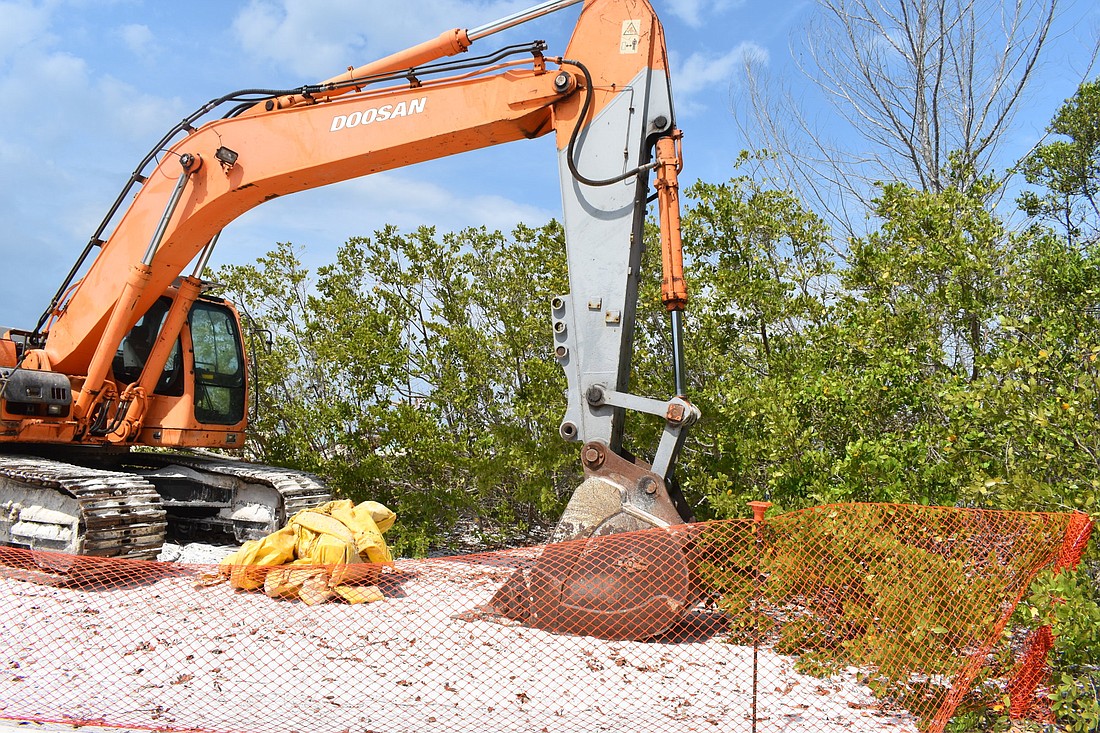- April 11, 2025
-
-
Loading

Work on the north end of Longboat Key’s $37 million beach renourishment project has prompted some confusion from visitors.
Several people emailed commissioners about the removal of iconic vegetation and driftwood on Greer Island, which is affectionately known among locals as Beer Can Island.
Bradenton-based photographer Billy Dzwonkowski was among those who wrote to Longboat Key Mayor Ken Schneier.
“I thought it was interesting because I’ve been here for 30 years, and I remember beach dredging and I remember beach replenishment and all that,” Dzwonkowski said. “In all the years that I remember that, I never remember it involving the removal of the driftwood, so I thought was kind of interesting.
“Now, I’m not educated enough to know if what they had done in the past wasn’t working, and that’s why they decided to do it.”
The driftwood removal is part of Segment 1 of the town’s beach renourishment plan, which goes from Green Island to Broadway Street. Dredging about 200,000 cubic yards of sand in these areas will take until about August 2021, according to documentation provided by the town.
Plus, Town Manager Tom Harmer wrote that the clearing is necessary because the town is installing five permeable rock groins in this area for further stabilization.
Seasonal Bradenton Beach resident Andre Archambault also wrote to town leaders, comparing the driftwood that existed at Greer Island to that of Jekyll Island in Glynn County, Georgia.
“I think the damage is done, but I think it’s just poor judgment that people don’t understand the value of some of this natural stuff that you can’t buy,” Archambault said.
Dzwonkowski said he was appreciative Mayor Ken Schneier and the town got back to him so quickly to address his concerns.
Schneier wrote that the beach maintenance is necessary every seven or eight years “to maintain the integrity of the island and our shoreline.”
Longboat Key Public Works director Isaac Brownman also replied to Dzwonkowski.
“While the town is working to stabilize the highly erosive northern end from washing out and breaching through, this will necessitate removing a lot of the dead vegetation that has washed down over time; the living mangrove fringe line will remain,” Brownman wrote. “Also, there is an area at the northern end that will be left as-is, with both the living and fallen trees and vegetation, and it that seems to be an area where many pictures are taken and where people like to spend time. It is underneath Australian Pine Trees and Mangroves.”
Dzwonkowski estimated he’s done about one-third of his photography business taking pictures at Greer Island. Many times the photos are of families visiting from out of town or of recent graduates.
“I was just upset because one, it was gorgeous and there's nothing else comparable to it,” Dzwonkowski said.
With the vegetation removed, Dzwonkowski said he’s recommended other photography locations to his clients such as the north end of Anna Maria Island.
“We've got other beaches, but there wasn't anything like that,” Dzwonkowski said.
Archambault thinks the town should have reconsidered removing the driftwood and vegetation.
“Somebody should have looked at this and thought of it not from the money part of it, but the aesthetics and the quaintness,” Archambault said. “That’s what they lost. It’s kind of sad.”